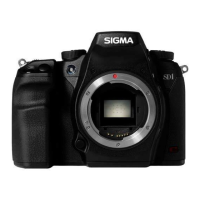Do mega pixels matter?
Today's digital cameras have already
reached impressive pixel counts.
The figures seem sufficient to
generate high-resolution images,
and even to withstand scrutiny in
enlarged prints. A plausible case
is often made that the mega-pixel
wars are meaningless because digital
cameras already have enough pixels.
The claim gains further support from
an understanding that resolution
is not determined by pixel count
alone. In a photograph, resolution
also depends on interactions among
many other factors, including lens
characteristics, low-pass filter
response, noise reduction, and
processing of contrast and sharpness
parameters. By itself, elevating the
pixel count doesn't necessarily lead
to an appreciable improvement in
picture quality.
Consider the 14MP direct image
sensor used in the Sigma SD15 and
Sigma DP1/DP2. Despite having
a nominal 4.6 million figure for the
number of pixel locations, this sensor
produces images that are widely
recognized as having excellent
resolution.
Where resolution and
realism meet
Still, Sigma thinks raising the pixel
count is desirable and necessary
to achieve the most natural image
rendition. In digital cameras, the limit
of resolution is determined by pixel
pitch. When a certain level of detail
(spatial frequency) is exceeded in
a target object, the camera suddenly
loses all ability to resolve it.
This phenomenon is one reason why
photos that include fine detail can
end up looking unnatural.
As an example, say you are shooting
a landscape with grass in the
foreground and mountains in
the background. The thin, closely
spaced blades of grass are resolved
correctly by the sensor in some
areas, but exceed the limit of
resolution in others. On the other
hand, the ridges and surfaces of
the mountains in the distance have
a low enough spatial frequency to
be resolved correctly throughout.
In other words, the foreground
would appear partially blurred
against a consistently sharp distant
background. A human observer
would register the opposite: sharply
defined blades of grass nearby, and
hazy mountains in the distance.
This limit of resolution, which can
be at odds with the human visual
system, may be an unavoidable
fact of physics. But Sigma believes
innovation can make the problem
so imperceptible that we can
realistically pursue and achieve more
natural image depiction. If so, we can
look forward to being able to shoot
images that are minimally affected
by enlargement, and that retain a
three-dimensional ambience even
when viewed in small formats.
Further pursuit of high resolution is
worthwhile not to win the pixel wars,
and not even to make large-format
prints. Rather, Sigma believes it is
needed to achieve more natural
photographic results.
30MP equivalent
‘emotional image quality'
The 46MP direct image sensor
of the SD1 is a breakthrough that
triples the 14MP resolution of the
sensor used in Sigma cameras up to
now, while retaining the “emotional
image quality” that is unique to
a full-color capture system.
We enlarged the sensor to APS-C
size (1.5x focal length equivalent),
while narrowing pixel pitch, thereby
dramatically raising the pixel count
to 46MP (4,800 x 3,200 x 3).
The luminance resolution of this
sensor is, in fact, equivalent to that
of a 30MP CFA sensor as measured
on the standard B&W resolution
chart used in conventional digital
camera resolution testing.
With outstanding chrominance
resolution that is free of low-pass
filtering and color interpolation,
Sigma takes a bold leap closer to
the ideal, further enhancing the
advantages of a direct image sensor.
In terms of technology and
image quality, this represents
a significant advance.
Here at last is an image sensor for all
who have ever dreamed of a digital
camera breakthrough that can
deliver the ultimate in image quality.
Image quality at its bona fide best.
Astonishing 46MP resolution
10

